Taiwan's Vitality Lies in Local Communities
Community in Action
Over the past 16 years, the Taiwanese government has been working in collaboration with local communities. These community development projects have enabled communities to help each other grow and surpass themselves.Over the years, Taiwan has seen various waves of cultural policies, but community development has remained a central theme.
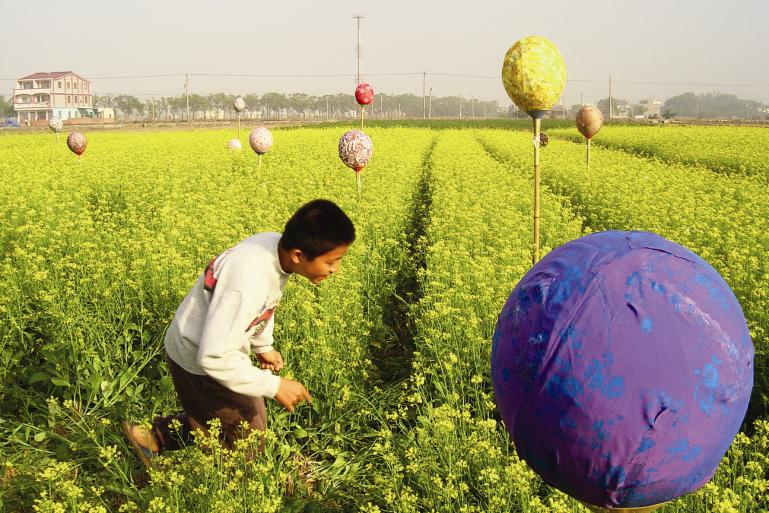
Spontaneity, Pride, Togetherness
A key term in Taiwan's community development projects is the idea of a “new hometown”. The Taiwanese Community Interaction Website (Council for Cultural Affairs) explains the importance of community development thus:
One of the ten projects comprising “Challenge 2008”, the national development plan, was the “New Hometown” Community Building Project. The other nine projects covered infrastructure, education, industrial upgrade, and environmental sustainability. All the projects were essential to national development.
The New Hometown Community Building Project aimed to encourage the public to identify with the places where they lived and create quality lives for themselves.
The idea is that if people are dedicated to improving their living environment, the whole country will eventually become a wonderful place to live.
A good community has spontaneity, pride, and togetherness. Residents should be able to think and act for themselves; they should be proud of their communities; and they should work together to realize their dreams. There is no fixed idea of what a good community should be like or a pre-determined way of building a good community. If people can dream and act together, they will be able to build their ideal communities. The New Hometown Community Building Project was all about using state power to encourage the public to dream and act so as to create the perfect place to live.
Culture and People Power
With the lifting of martial law in 1987, Taiwanese society was no longer bound by political taboo, and liberalization paved the way for all kinds of social movements. Since then, a great number of foundations have been set up in Taiwan for the preservation and promotion of local cultures and history. A study commissioned by the Council for Cultural Affairs shows that this type of foundation proliferated between 1992 and 1996. The most influential is the Hsin Kang Foundation of Culture and Education, which was established in 1987.
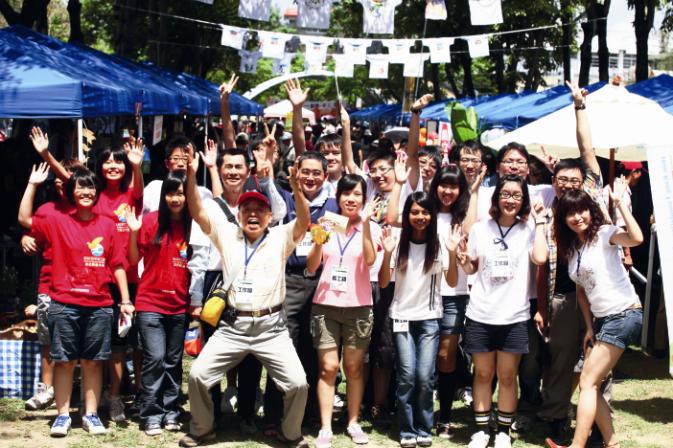
In the late 1980s, as Taiwanese society gradually began to enjoy new forms of freedom, certain disconcerting trends arose, including a widespread gambling fever and street performances of dubious taste. This prompted Hsin Kang Township’s Dr. Chen Chin-huang and a number of concerned community leaders to set up the Hsin Kang Foundation of Culture and Education, the goal of which is to create a better environment for future generations.
Later on, as social movements converged with political activism, community groups developed into grassroots forces for social change. In 1989, the Hsin Kang Foundation of Culture and Education launched a clean-streets campaign that coincided with an annual religious procession. The campaign has since become an annual event: each year when the Mazu pilgrimage procession takes place, volunteers can be seen diligently cleaning local areas.
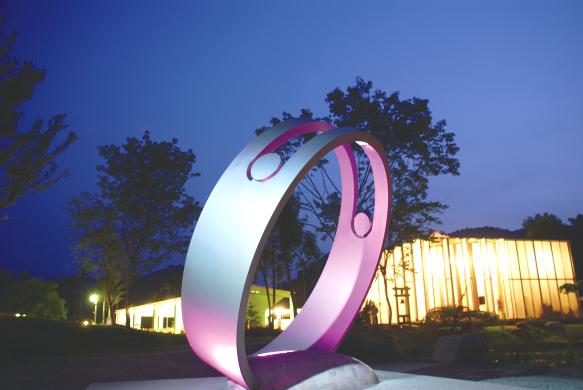 Seeing the success of the Hsin Kang Foundation of Culture and Education, other communities followed suit and set up similar groups. Kaohsiung County’s Meinong Township (now Kaohsiung City’s Meinong District) is predominantly a Hakka agricultural community. In the early 1990s, the central government was planning to build a reservoir in Meinong, but the project had been decided without the local community’s knowledge and participation. When news of the project was leaked, it met with local opposition. Young Meinong residents went to great lengths to collect information and consult experts, also inviting representatives from the International Rivers Network (IRN) to deliver speeches to the local community. The young people’s efforts paid off: local residents became more and more aware of the issue and eventually petitioned the legislature. Ten years on, the initial anti-reservoir movement has turned into an advocacy group for water preservation. Since 1995, the local community has also held the annual Meinong Yellow Butterfly Festival to promote environmental awareness.
Seeing the success of the Hsin Kang Foundation of Culture and Education, other communities followed suit and set up similar groups. Kaohsiung County’s Meinong Township (now Kaohsiung City’s Meinong District) is predominantly a Hakka agricultural community. In the early 1990s, the central government was planning to build a reservoir in Meinong, but the project had been decided without the local community’s knowledge and participation. When news of the project was leaked, it met with local opposition. Young Meinong residents went to great lengths to collect information and consult experts, also inviting representatives from the International Rivers Network (IRN) to deliver speeches to the local community. The young people’s efforts paid off: local residents became more and more aware of the issue and eventually petitioned the legislature. Ten years on, the initial anti-reservoir movement has turned into an advocacy group for water preservation. Since 1995, the local community has also held the annual Meinong Yellow Butterfly Festival to promote environmental awareness.
Other notable community groups include the Niumatou Cultural Association (set up in 1994) in Taichung County’s Qingshui Township (now Taichung City’s Qingshui District), the Community Empowering Society Taiwan (1996), and the New Homeland Foundation in Nantou County’s Puli Township (1999). These community groups include scholars and experts dedicated to the promotion of Taiwanese culture and history, and their influence continues to make itself felt in Taiwanese society.
National Festival of Culture and Arts
As community development projects picked up pace, the Council for Cultural
Affairs attempted to combine culture with community development.
When the Council was established in 1981, it took over the National Festival of Culture and Arts from the Ministry of Education and started to hold a series of arts exhibitions, seminars, and performances. But these events all focused on high art, and the Council realized that promoting local culture was just as important. Thus, the Council began pushing for projects to reduce cultural gaps and promote arts in remote areas.
After conducting intensive policy reviews, the Council decided to take a back seat and play a coordinating role, transferring power to local cultural centers who would then decide how best to present local cultures in the National Festival of Culture and Arts.
The 1993 National Festival of Culture and Arts comprised over 300 events, including fairs and seminars, held in 25 cities and counties across Taiwan. Extensive media coverage of the festival also boosted visibility.
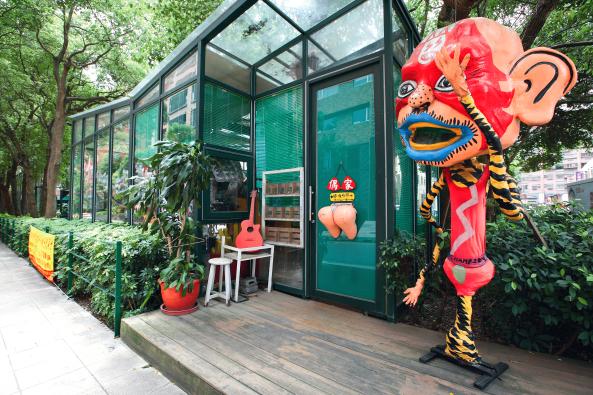 The National Festival of Culture and Arts allows traditional cultures to take center state and demonstrate their artistic value, giving the public the opportunity to take pride in their local cultures. In the wake of the festival, Chen Chi-nan, then deputy chairperson of the Council, assembled a group of scholars and experts who would offer advice to local government bodies about how to organize cultural events. Chen’s efforts have greatly helped local communities promote their cultures.
The National Festival of Culture and Arts allows traditional cultures to take center state and demonstrate their artistic value, giving the public the opportunity to take pride in their local cultures. In the wake of the festival, Chen Chi-nan, then deputy chairperson of the Council, assembled a group of scholars and experts who would offer advice to local government bodies about how to organize cultural events. Chen’s efforts have greatly helped local communities promote their cultures.
The Council also started to delegate the promotion of cultural internationalization to local institutions and formed policies to implement this idea. These policies changed the long-held attitude that only cultural institutions affiliated with central government or located in the capital (Taipei) are able to hold international arts events.
The Council devised the following principles to guide cities and counties who seek to hold international cultural events.
- Events should use a single theme and location each year.
- Mass culture, high art, and modern culture are all equally important.
- The event must be clearly defined and highlight local culture.
- The event must have a solid foundation of cultural and historical research. Good marketing and facilities are also essential.
- The event design must be conducive to local community development.
- Long-running themes are preferable, because this will help establish the local community as a brand.
- Presenting unique local characteristics helps to attract an international audience.
- Local cultural centers can act as an intermediary between local communities and international performance groups.
- Earning a good reputation and doing further research are essential to future development.
With these guidelines, the Council successfully transferred central government experience of holding international arts events to local governments and trained new organizers.
Since 1996, local governments have been holding international cultural events. Some of the most successful examples are Tainan County’s (now Tainan City) Nanying International Folklore Festival and Yilan County’s International Children’s Folklore and Folkgame Festival. These events have attracted hundreds of thousands of people and have become an integral part of their local communities. The events are also important platforms where arts groups from local areas and from overseas can interact.
In 1994, Shen Hsueh-yung, Chairperson of the Council for Cultural Affairs, presented a report at the legislature detailing policies on community development and the projects underway. The policies embodied former President Lee Teng-hui’s visions for community development and aimed to encourage the public to take the initiative to improve their local communities. Since then, the idea of community development has become one of the Council’s focal points and has taken root in local communities.
Four Community Development Projects
The Council devised four projects to put community development policies into practice. The aim of the projects was to help communities develop cultural events,
improve performance facilities, set up exhibition venues, and enrich their museum collections.
The first of these projects aimed to promote the concept of community development and train people to work in this area. To this end, the Council designed a series of courses for university students, local cultural workers, administrative staff, and members of the general public. In addition, seminars and conferences were held, and books and films were made to promote the concept of community development. In 1997, the Council organized the National Community Building Fair, attracting a large audience who got to experience the achievements of community development first hand.
The other three projects encouraged public participation in cultural events by renovating facilities and enhancing the contents of exhibitions and performances. Performing arts groups were invited to remote areas so that people living there would be able to attend arts performances. The Council also encouraged local residents to take the initiative to care for old buildings and think of innovative ways to repurpose them and thus improve their living environment.
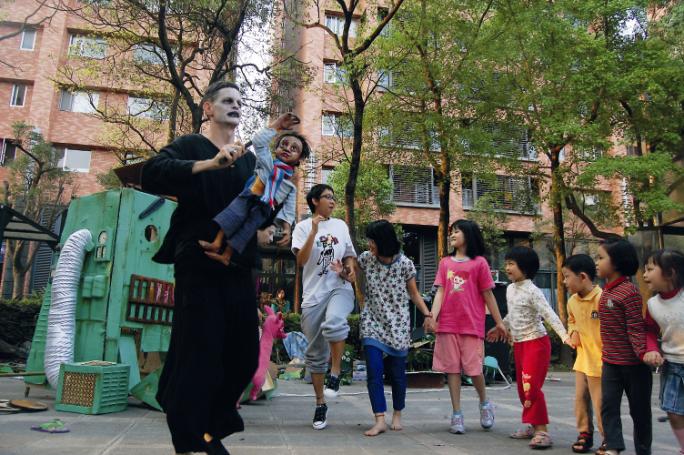
After years of promotion and participation by community volunteers and professionals, the concept of community development has taken root and is welcomed by the public. The movement is testimony to the vitality of Taiwan, enhancing people power and making local residents proud of their communities. Scholars have hailed the community development project as “the most successful social movement in Taiwan”.
Community Empowerment is About Creating a New Culture
Realizing how important it is to encourage local residents to play an active role in community affairs, the Council took care not to focus exclusively on physical infrastructure. According to Chen Chi-nan, then deputy chairperson of the Council, community development is not about constructing a community but building a new society and a new culture. Improving living environments also transforms residents’ lives.
Post-9/21 Earthquake Reconstruction Opens a New Era
On September 21, 1999, a magnitude-7.3 earthquake struck Taiwan. The Executive Yuan set up a special commission to facilitate reconstruction and which acted as a platform for horizontal integration of government resources. The commission also coordinated with communities and professionals from the private sector to work on rebuilding communities. Since then, a new era of community development has begun in Taiwan, and communities of all types have sprung up.
In July 2001, the Council announced the 9/21 Earthquake Reconstruction Plan under which the reconstruction would be divided into four areas and professional help in reconstruction would be provided for communities. At the time, the Council formed an integrated framework with professional teams that included centers for community development and case management across Taiwan. This integrated framework was the brainchild of deputy chairperson Wu Mi-cha and community leaders such as Liao Chia-chan, Huang Shih-hui, Lu Si-yuan, and Huang Mei-ying.
Through their selection of locations and staff, the Council was able to implement the framework and provide real help to communities. Within three years, the Council fostered the reconstruction of many communities, enabling them to emerge anew from the rubble while preserving their traditional cultures.
In 2009, ahead of the tenth anniversary of the 9/21 Earthquake, Typhoon Morakot ravaged southern Taiwan, claiming many lives and inflicting extensive damage.
That year, the Council held an international conference to mark the tenth anniversary at National Chi Nan University, bringing together community leaders who had participated in the rebuilding of communities following the 9/21 Earthquake. Also present were people who had contributed to reconstruction efforts in the wake of Japan’s Kobe Earthquake in 1995 and China’s Sichuan Earthquake in 2008.
Huang Pi-twan, then chairperson of the Council for Cultural Affairs, said although the disasters brought by the 9/21 Earthquake and Typhoon Morakot were very different, they were similar in that in each case there was a group of people who were passionate about reconstruction. Huang also said their efforts helped to console people displaced by the disasters.
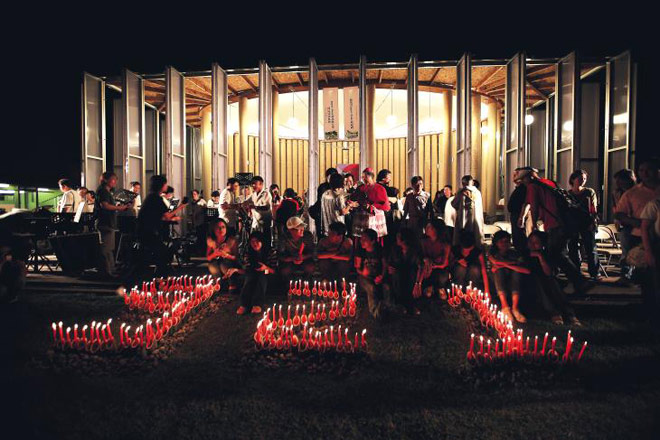
Drawing examples from the reconstruction work undertaken in the wake of the 9/21 Earthquake, the Council devised a plan that focused on community rebuilding and the training of community developers. The disaster-stricken areas were divided into four zones, and round-the-clock professional assistance was made available to help communities rebuild their homes and preserve their cultures. The experience of successful community rebuilding after the 9/21 Earthquake also provided guidance.
Taiwan’s Vitality Lies in Its Communities
In 2001, Chen You-chiou, then chairperson of Council for Cultural Affairs, invited Professor of History at National Taiwan University Wu Mi-cha to be her deputy and take charge of community development projects. On assuming the post, Professor Wu enlisted expert views on current community development projects and discovered that many communities applied for government funds simply for one-off events and that the projects only created a small number of star communities. This led Wu further to clarify the concepts of community empowerment and community renewal.
For Wu, community infrastructure establishment is about using a variety of methods to unite the residents in a given area or community. The residents decide together how to solve the problems they are facing and create the community they
want. By working together, residents have more say about what is going on in their community. Cultural events and historical studies provide some of the methods that can be used to bring residents together and encourage them to deal with public affairs. In other words, community development should be a source of community empowerment and renewal.
Wu recognized that certain problems had arisen in community development projects over the years. This was why the Council needed to assess and redesign projects, in order to understand what communities really needed and allocate public resources more effectively.
Chen You-chiou (then chairperson for the Council for Cultural Affairs) personally visited the communities while the community development projects were being carried out in order to boost morale. In the words of Professor Wu, community development projects are not simply about government subsidies: the government has to listen to the people and find out what they need. By visiting the communities, Council chairperson Chen You-chiou got to know the people and realized that Taiwan’s vitality lies in its communities.
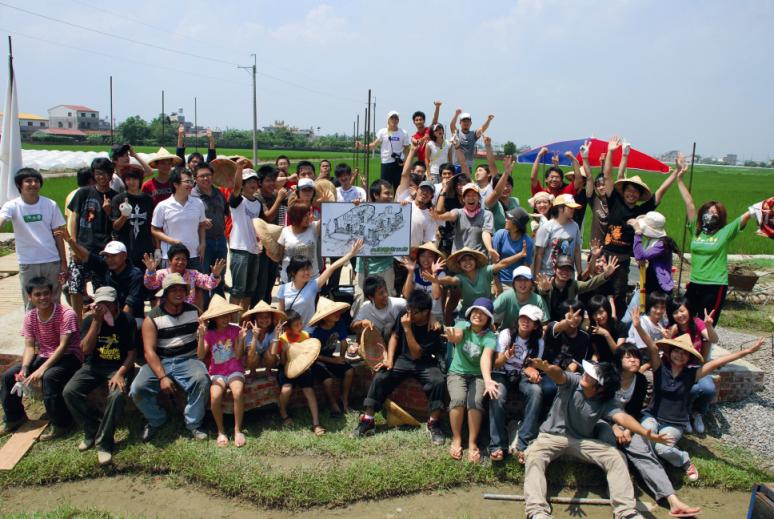
“New Hometown” Community Building Project Kicks Off
By the end of 2000, all community development projects launched by the Council were winding down. Since communities were becoming more active, the Council presented a new series of projects to address other aspects of community development.
In 2001, the Council launched four new programs aimed at encouraging local residents to participate in environmental protection, conservation of historic heritage and traditions, development of artistic events, and revitalization of declining traditional industries. These four projects helped communities to develop in more diverse directions, and were the precursor of the Council’s New Hometown Community Building Project.
In August 2002, the Executive Yuan launched Challenge 2008: National Development Projects. The New Hometown Community Building Project was listed as a major project, and this was the first time that community development had been set as a national priority. At the same time, the number of government agencies participating in community development increased to nine. 28 sub-projects were devised, covering human resources, culture, industries, natural scenery, and community welfare.
In 2005, the Executive Yuan launched the Six-Star Plan for Healthy Communities, which involved 13 government agencies and consisted of 61 sub-projects. This well-rounded plan covered industrial development, social welfare and medical care, crime prevention, education, landscape, and environmental protection.
Guided by the Executive Yuan’s policy direction, the Council launched the New Hometown Community Building Project, including six sub-projects which built on the Council’s experience of and achievements in community development, and helped local governments train community development staff.
Combining Government Administration and Community Development
When the Challenge 2008: National Development Projects were launched, several government agencies were involved in various kinds of community development projects. Thus, good horizontal communication between government agencies became imperative. As the advising agency, the Council held regular inter-agency meetings in order to coordinate information and facilitate communication. Between 2003 and 2005, the Council issued a quarterly carrying information from different government agencies, on community development cases and events held across the country. The quarterly enabled government agencies to learn from and communicate with each other.
In 2005, the Taiwanese Community Interaction Website (sixstar.moc.gov.tw) as a platform for community development. At first, the website was mainly used for the publication of government information and community development case files, so that the government and community residents could conduct a dialogue. The website was subsequently revised many times, and communities can now make their own webpages within the parent website. As of November 2010, over 4,700 communities have set up their own webpages on the site. In June 2005, the website launched an e-newsletter, and so far 146 issues have been published. With a monthly traffic of 400,000 viewers, this website is the biggest community platform in the country.
The Taiwanese Community Interaction Website (sixstar.moc.gov.tw)
The Council believes that experience of community development should be passed on. This is why they helped train local government administrative staff as community developers. Following the launch of the Six-Star Plan for Healthy Communities, local governments set up committees to act as platforms where different agencies can communicate with each other. Some local governments also designed their own methods of promoting community development. Taoyuan County offered courses and visits to communities to administrative workers of all levels; Tainan City began a project called “Healthy City” to spur community development. According to scholar Tseng Shu-cheng, government agencies began to engage in unprecedented levels of dialogue and cooperation focused on community development. Interagency collaboration was one of the most important achievements of the Six-Star Plan.
Revitalization of Industries and Unused Space
The Taiwanese Community Interaction Website (sixstar.moc.gov.tw)
The revitalization of declining industries and disused space was also one of the focal points of the Council’s New Hometown Community Building Project. The Council used sub-projects to achieve its goals of reviving cultural assets and using space creatively.
Industrial development has been a critical issue for many communities. After years of efforts, many unique industries have emerged in various communities. The Huben Community in Yunlin County is home to the beautiful fairy pitta, a small, colorful songbird. With its rich local wildlife, the Huben Community sought to develop its eco-tourism, and the local cooperative now runs restaurants and B&Bs, and sells dairy products. The Yongle community in Changhua County revived their traditional pickle industry and created a new market for this traditional food.
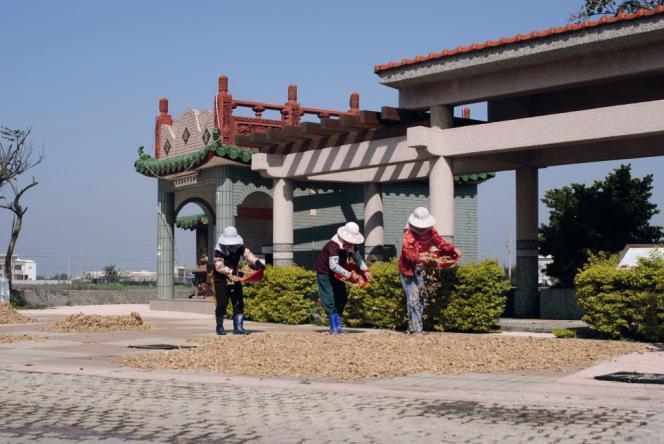
The Baimi Community in Yilan County is known throughout the country for its wooden clogs. The industry took off in 1997, when the community presented its vision of a unique “wooden clog village” at the National Community Building Fair. The community wanted to enhance the quality of life and economic development in the area by launching a cultural industry. After years of hard work, the community has now become a prime destination for people who are interested in wooden clog making.
The six-year New Hometown Community Building Project has achieved a lot. Its achievements were feted with an exhibition held by the Council and a variety of events organized by local governments.
In 2010, the Council held an exhibition showcasing cultural industries across Taiwan. The exhibits included a series of cups inspired by a local mountain boar
legend in Chiayi County's Laiji Community. The cups depict the community’s beliefs about culture, nature, and life. Yilan County's Daxing Community paints erhu (a traditional instrument sometimes known as the “Chinese violin”) with images of peonies. The idea is to take something traditional and recast it in a modern form. Taichung County’s Painted Pottery Association incorporates a wheat motif in much of their pottery, resulting in something both pleasing to the eye and representative of the local community.
 |
 |
Expanding and Deepening Community Development Efforts
In continuation of their efforts in community development, in 2007 the Council launched the second phase of the New Hometown Community Building Project, focusing on augmenting communities’ “soft power”. The project used a series of cultural activities—photography, literature, arts, and theater—to enhance the quality of life of local residents and encourage their participation in public affairs. Gradually, communities learned to preserve and promote their local cultures.
An example of a community preserving their culture is Kaohsiung County’s(now Kaohsiung City) project to turn communities into film sets. The films which were made recorded resident’s lives and unearthed precious cultural legacies that had been passed over. One of the films takes place in Jiutang Village and follows four employees of the local waterworks. Such rediscovery and preservation of local stories ensure that cultural memories are not lost as the older generation passes on.
In 2008, Yunlin County launched an illustrated book campaign, focusing on local community stories. Classes were held to help local residents tell their stories in pictures. People of all ages participated in the classes and learnt to present their stories through vivid and accessible artworks.
Apart from spreading cultural projects, the second phase of the New Homeland Community Building Project sought to involve local government administrative staff in community development work. Danshui Township Office in Taipei County (now New Taipei City’s Danshui District Office) collaborated with nearby schools and tried to put on an arts parade after the fashion of Xizhi’s Dream Community. However, the plan failed to spark the enthusiasm of local residents.
 Later, in 2008, Danshui Township Office had an unexpected opportunity to collaborate with the British Council, and introduced the idea of holding a carnival into its community development work. The office also started to network with local artists and communities. In 2009, the township office divided Danshui into three areas according to location and lifestyle, and worked with residents to develop their communities. Gradually, people started to turn out to participate in arts parades, and the township office helped residents, in collaboration with Sun Son Theatre, organize the Citizen's Environmental Theater group. Local residents staged a play in Danshui to reenact scenes from the (late 19th century) Sino-French War. In 2010, the township office renewed its efforts, and this time hopes to bring more people to participate in the making of visual records of local community stories. All the above examples are testimony to the power of community development: a small act can have enormous consequences.
Later, in 2008, Danshui Township Office had an unexpected opportunity to collaborate with the British Council, and introduced the idea of holding a carnival into its community development work. The office also started to network with local artists and communities. In 2009, the township office divided Danshui into three areas according to location and lifestyle, and worked with residents to develop their communities. Gradually, people started to turn out to participate in arts parades, and the township office helped residents, in collaboration with Sun Son Theatre, organize the Citizen's Environmental Theater group. Local residents staged a play in Danshui to reenact scenes from the (late 19th century) Sino-French War. In 2010, the township office renewed its efforts, and this time hopes to bring more people to participate in the making of visual records of local community stories. All the above examples are testimony to the power of community development: a small act can have enormous consequences.
A Channel for Fostering Community Developers
It is thanks to the joint efforts of communities and local governments that the Council’s community development policies could be implemented. This cooperation is a valuable channel for fostering local talent.
The development of this fostering channel can be traced back to the reconstruction following the 9/21 Earthquake. The Council marked out four reconstruction areas, according to geographical location and local ethnicity. The Council also worked with the private sector to rebuild communities.
In 2002, the New Hometown Community Building Project followed the same pattern in its initial stage. But later on, when the work began to get underway, local teams took over the reins, and running of the fostering channel was devolved from the
Council to local government. In the process, local teams were strengthened and have become important platforms of community development.
Council community development work now centers on fostering talent and integrating resources from both public and private sectors. Encouraging and supporting new sources of talent has always been the Council’s primary task in community development. It is hoped that, through long-term training, local communities will internalize the concept of community development and start to contribute to community affairs. Currently, three types of classes are offered. The beginner’s level focuses on introducing the concept of community development, while more advanced classes center on practical application. Also available are themed-classes, tailored to suit each community’s development vision.
The Youngsun Culture & Education Foundation is one of the longest-established expert community development organizations in Taiwan. Since 1999, the foundation has been helping Yilan County Government, providing beginner’s and advanced classes in order to spread positive attitudes towards community development. Government officials of different levels were brought together to discuss how best to integrate and use resources. Various aspects of community development have received support: industrial development, environmental protection, culture, and economy. In recent years, development of the arts and the creative industry has become a focal point. Related projects involve film and photography, community theater, and scheduled meetings between artists and local residents. It is hoped that different communities will be able to showcase their distinct characters and enjoy sustainable development.
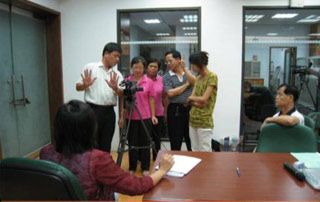 |
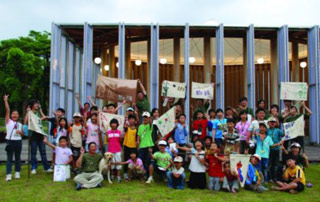 |
The Taiwan Community Empowering Network has long served as the promoter of community development for Taipei County (now New Taipei City), a large area and with communities of several different types. In order to help communities develop their own distinct characteristics, the Taipei County Government published a
white paper in 2005 as a guideline to cultural development for local communities. The county government also collaborated with community colleges to offer photography lessons, worked with planners to renew environments, and teamed up with the Tsuei Ma Ma Foundation for Housing and Community Service to empower residents. In recent years, the Taiwan Community Empowering Network has been working to integrate community development.
The Community Development Center of Tainan City was set up by Tainan City Government’s Department of Culture and Tourism with the aim of promoting community development. Learning from the experience of rebuilding following the 9/21 Earthquake, Community Development Center of Tainan City divided the city into five areas based on historical and geographical features. Professional staff were assigned to the five areas, and there were regular meetings to encourage interaction among different communities. The development work proceeded smoothly, and now the communities have moved a step forward: community development is no longer organized according to administrative boundaries but is an integrated effort organized according to issues. The different communities work together to maximize their resources and thus become a bigger force in public life.
With the assistance of local government and the community development center, the concept of community development has taken hold in Taiwan, helping communities display and preserve their most distinct legacies.
Communities and Soft Power
In 2010, the Council held an exhibition at Taipei’s Huashan 1914 Creative Park to highlight the achievements of 19 outstanding teams of community developers, 30 cultural itineraries in Taiwan, and 100 cultural products. According to Culture Minister Emile Sheng, communities are important sources of cultural vitality and soft power in Taiwan. He also said this soft power is what makes Taiwan stand out in the world. Sheng lauded community development as a collective achievement.
To continue the achievement of community development, in 2010 the Council launched the Spotlight Project for Community Development. The project encourages local government and community organizations to work together to create an environment for innovation and a sustainable cultural industry. Innovation and culture fuel each other: innovation brings about better cultural events, artistic development,
and education, which in turn help the cultural industry to grow. The Council understands that only through constant innovation can community development go forward.
Since 1994, community development in Taiwan has achieved a lot. We hope that the vitality we find in communities across Taiwan will continue to inject energy into community development. In this way, the dream of making communities in Taiwan beautiful and culturally thriving places to live will become a reality.
Note: On December 25, 2010, Taiwan saw the birth of four new special municipalities—New Taipei City (the upgraded Taipei County), Taichung City (the merger of Taichung City and County), Tainan City (the merger of Tainan City and County) and Kaohsiung City (with Kaohsiung County incorporated into Kaohsiung City)






 Seeing the success of the Hsin Kang Foundation of Culture and Education, other communities followed suit and set up similar groups. Kaohsiung County’s Meinong Township (now Kaohsiung City’s Meinong District) is predominantly a Hakka agricultural community. In the early 1990s, the central government was planning to build a reservoir in Meinong, but the project had been decided without the local community’s knowledge and participation. When news of the project was leaked, it met with local opposition. Young Meinong residents went to great lengths to collect information and consult experts, also inviting representatives from the International Rivers Network (IRN) to deliver speeches to the local community. The young people’s efforts paid off: local residents became more and more aware of the issue and eventually petitioned the legislature. Ten years on, the initial anti-reservoir movement has turned into an advocacy group for water preservation. Since 1995, the local community has also held the annual Meinong Yellow Butterfly Festival to promote environmental awareness.
Seeing the success of the Hsin Kang Foundation of Culture and Education, other communities followed suit and set up similar groups. Kaohsiung County’s Meinong Township (now Kaohsiung City’s Meinong District) is predominantly a Hakka agricultural community. In the early 1990s, the central government was planning to build a reservoir in Meinong, but the project had been decided without the local community’s knowledge and participation. When news of the project was leaked, it met with local opposition. Young Meinong residents went to great lengths to collect information and consult experts, also inviting representatives from the International Rivers Network (IRN) to deliver speeches to the local community. The young people’s efforts paid off: local residents became more and more aware of the issue and eventually petitioned the legislature. Ten years on, the initial anti-reservoir movement has turned into an advocacy group for water preservation. Since 1995, the local community has also held the annual Meinong Yellow Butterfly Festival to promote environmental awareness.  The National Festival of Culture and Arts allows traditional cultures to take center state and demonstrate their artistic value, giving the public the opportunity to take pride in their local cultures. In the wake of the festival, Chen Chi-nan, then deputy chairperson of the Council, assembled a group of scholars and experts who would offer advice to local government bodies about how to organize cultural events. Chen’s efforts have greatly helped local communities promote their cultures.
The National Festival of Culture and Arts allows traditional cultures to take center state and demonstrate their artistic value, giving the public the opportunity to take pride in their local cultures. In the wake of the festival, Chen Chi-nan, then deputy chairperson of the Council, assembled a group of scholars and experts who would offer advice to local government bodies about how to organize cultural events. Chen’s efforts have greatly helped local communities promote their cultures. 





 Later, in 2008, Danshui Township Office had an unexpected opportunity to collaborate with the British Council, and introduced the idea of holding a carnival into its community development work. The office also started to network with local artists and communities. In 2009, the township office divided Danshui into three areas according to location and lifestyle, and worked with residents to develop their communities. Gradually, people started to turn out to participate in arts parades, and the township office helped residents, in collaboration with Sun Son Theatre, organize the Citizen's Environmental Theater group. Local residents staged a play in Danshui to reenact scenes from the (late 19th century) Sino-French War. In 2010, the township office renewed its efforts, and this time hopes to bring more people to participate in the making of visual records of local community stories. All the above examples are testimony to the power of community development: a small act can have enormous consequences.
Later, in 2008, Danshui Township Office had an unexpected opportunity to collaborate with the British Council, and introduced the idea of holding a carnival into its community development work. The office also started to network with local artists and communities. In 2009, the township office divided Danshui into three areas according to location and lifestyle, and worked with residents to develop their communities. Gradually, people started to turn out to participate in arts parades, and the township office helped residents, in collaboration with Sun Son Theatre, organize the Citizen's Environmental Theater group. Local residents staged a play in Danshui to reenact scenes from the (late 19th century) Sino-French War. In 2010, the township office renewed its efforts, and this time hopes to bring more people to participate in the making of visual records of local community stories. All the above examples are testimony to the power of community development: a small act can have enormous consequences.
